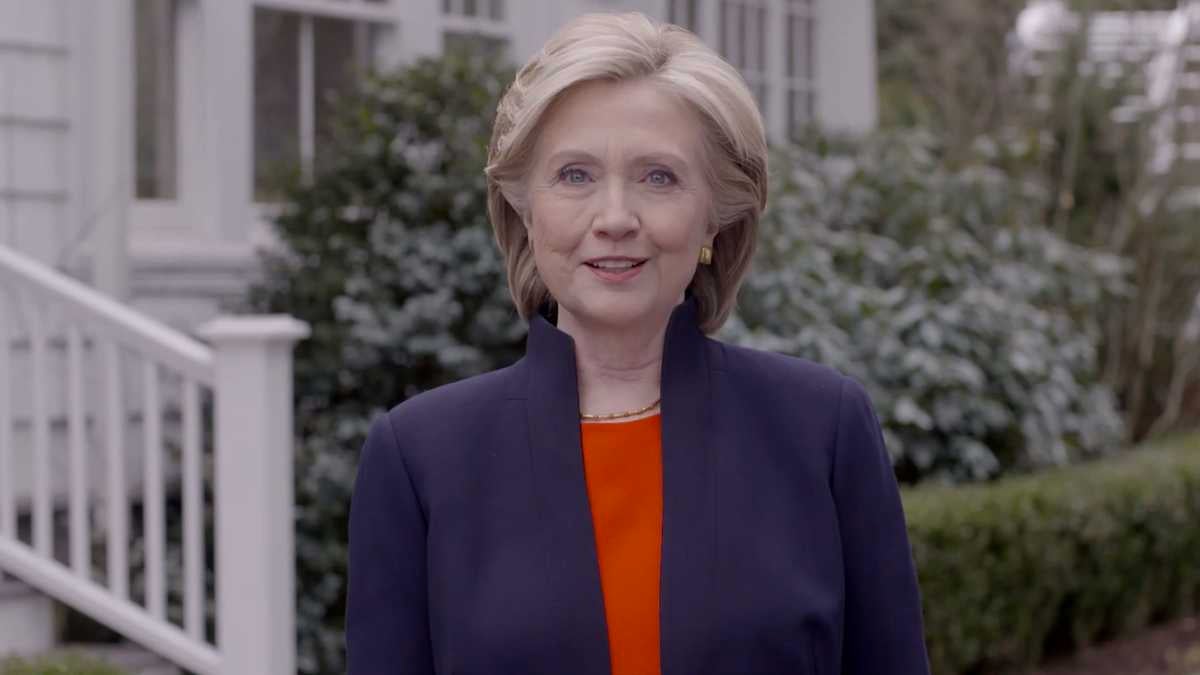Hilary Clinton and the problem of gender bias
Listen
Image from video announcing Hillary Rodham Clinton presidential campaign. (Hillary For America via AP)
Hillary Clinton announced her candidacy for the presidency in a low-key video, featuring Americans from different races and backgrounds. Then she embarked on a roadtrip in a GMC van, just like the regular folk in the video might drive.
Clinton is trying to alter popular perceptions that she is aloof, entitled, and otherwise out of touch with “everyday Americans,” as her campaign calls them. But there’s one thing about Clinton that she’ll never be able to change: her gender. And, in the end, that might be the thing that blocks her from the White House.
Right now Clinton is the overwhelming favorite. Her name recognition and fund-raising prowess dwarf all of the Republican candidates, who will spend much of the next year cutting each other down. By contrast, Clinton probably won’t face a serious challenger for the Democratic nomination. With a full war chest, her backers hope, she’ll trounce her GOP opponent in the general election.
But that’s assuming Americans will vote for a woman for president. Unfortunately, our history suggests otherwise. Female candidates are defined by their gender, in a way that men never are. And that makes the women seem, well, un-presidential.
The first modern female aspirant for the White House was Margaret Chase Smith, the Maine senator who was also the first women elected to that body in her own right. After she announced her candidacy for the Republican nomination in 1964, news reports invariably focused on her “trim” and “white-haired” appearance.
They also stressed Smith’s ambition, which was seen as something less than female. After admitting that she didn’t have the time or money to run a large-scale campaign, Smith “announced saucily that she is going to run . . . just the same,” as one account noted.
Eight years later Shirley Chisholm campaigned for the Democratic nomination, demanding more spending on education and less on defense. But those positions marked her as stereotypically “female” in the eyes of many voters, who wanted a “strong” figure—in other words, a man—in the White House.
It didn’t help that she was also African-American. “The Presidency is for white males,” Chisholm said, looking back on the 1972 race. “No one was ready to take a black woman seriously as a candidate.” Nevertheless, Chisholm predicted, “the next time a woman runs, or a black . . . I believe he or she will be taken seriously from the start.”
But when Elizabeth Dole sought the GOP nomination nearly three decades later, in 2000, she found that she was still defined—and diminished—by her gender. Reporters focused heavily on her appearance and personal life, whereas her male challengers—George W. Bush and John McCain—received more coverage about their political views.
When they did discuss Dole’s politics, meanwhile, accounts cast her as overly “scripted.” A male candidate who repeated the same thing over and over was praised for “discipline” and “staying on message.” But a woman who did that was a “Stepford wife,” as reporters called Dole, a robotic mannequin without passion or authenticity.
That’s been a common charge against Hillary Clinton, too, which speaks to the larger dilemma of female presidential candidates. If your eyes well up on the campaign trail, as Clinton’s did during her Democratic primary run in 2008, you’re seen as weak, vulnerable, and overly emotional. But if you remain calm and even-keeled, which would be admired in a man, you’re callous and hard-hearted.
Then there’s the problem of the female body, which draws a completely different kind of attention than the male one does. Consider the 2008 flap over Clinton’s alleged display of cleavage on the Senate floor, as reported by the Washington Post. Clinton’s campaign struck back, noting that male style choices never made similar headlines.
But when the Clinton campaign cited the Post controversy in a fundraising letter, the narrative changed again: instead of an excessively sexual creature, Clinton was a coldly calculating one. “Oval Office or Bust,” one account jeered; another wondered how much the cleavage episode had added to “Clinton’s other war chest.”
And when Barack Obama vaulted ahead of her in the 2008 primaries, Clinton became the most terrifying female figure of all: a woman scorned. Reporters compared her to Lady Macbeth or to the Glenn Close figure in Fatal Attraction, who would keep coming back until she was killed.
She’s back now, and she’s squarely in the front of the pack for 2016. The big question is whether she can stay there. Our political history is littered with female candidates who turned out to be too female, or not female enough. Eight years ago, when Obama defeated Clinton, we discovered that America was ready for a black president. We’re about to learn whether it’s ready for a female one.
____________________________
Jonathan Zimmerman teaches history and education at New York University. He is the author of “Too Hot to Handle: A Global History of Sex Education“, which is published by Princeton University Press.
WHYY is your source for fact-based, in-depth journalism and information. As a nonprofit organization, we rely on financial support from readers like you. Please give today.

